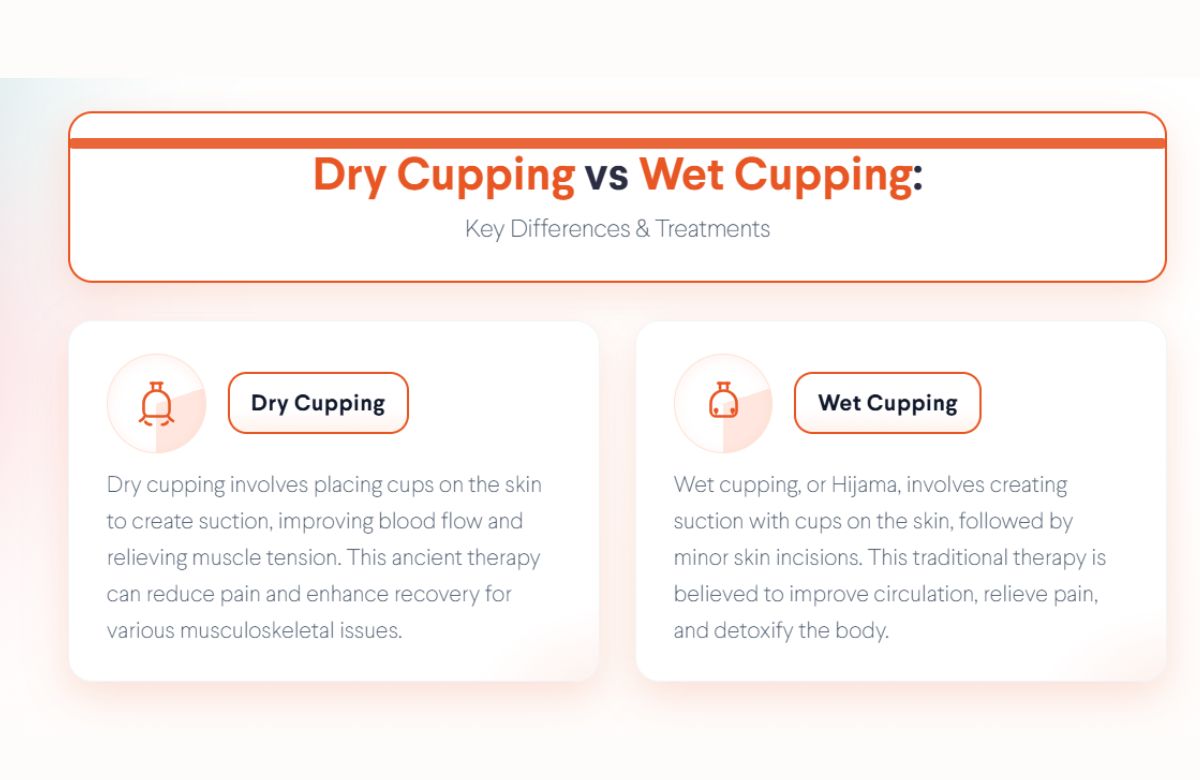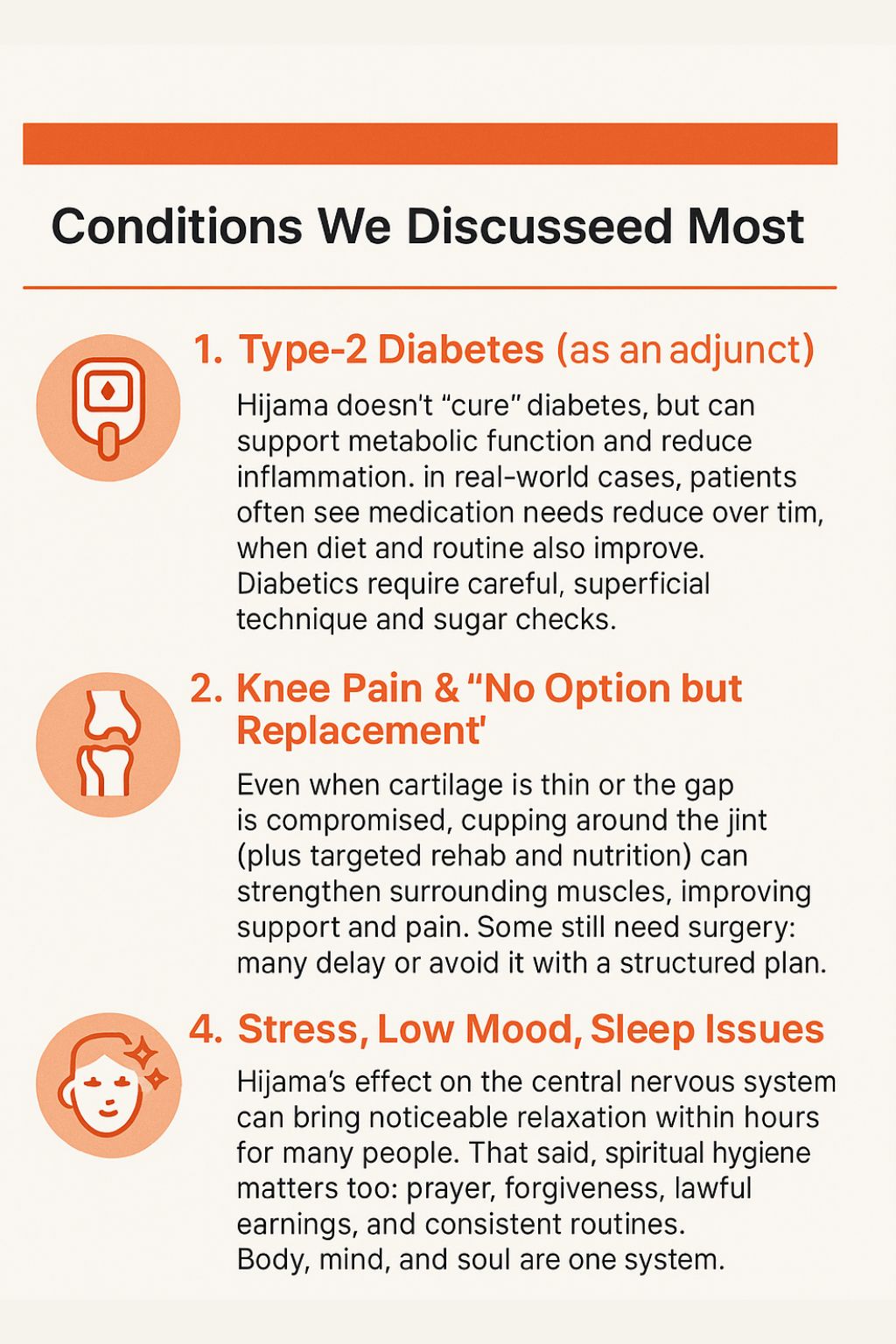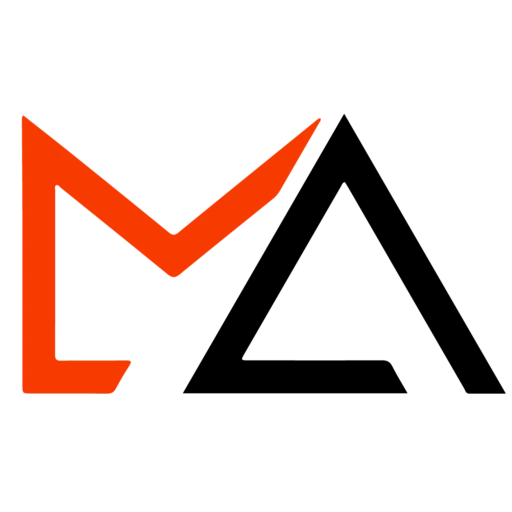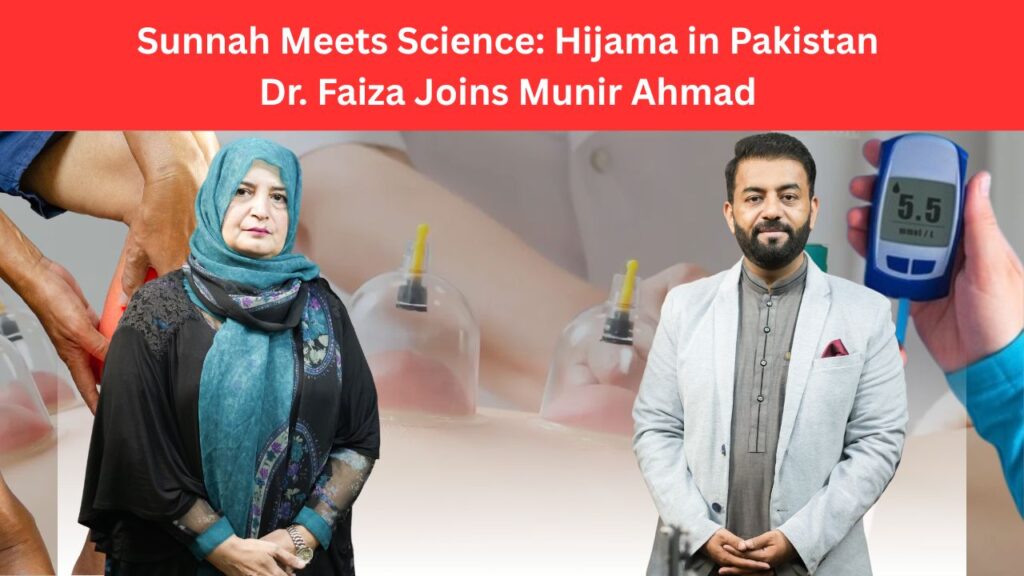In this special episode, Munir Ahmad sat down with Dr. Faiza to explore a practice that is at once a Prophetic tradition and a modern therapeutic tool: Hijama in Pakistan (wet cupping).
Fourteen centuries ago, our Deen pointed us to this treatment; today, the West calls it “wet cupping,” physiotherapists apply its dry variant for pain relief. Licensed clinics across the Gulf run it under strict protocols.
Between faith and science, spirituality and standards, one message came through clearly in our conversation: Hijama in Pakistan is powerful — when done properly.
Why Hijama in Pakistan — and Why Now?
We live in time of lifestyle disease: metabolic disorders, chronic pain, anxiety, and fatigue. People want relief that’s effective, affordable, and low-risk. Hijama checks those boxes. If provided by trained, medically grounded practitioners. Who follows strict hygiene and correct technique.
For me, Hijama is also deeply personal. My first session years ago (in Dubai) came with nerves and questions. Like many of you, I had watched intense YouTube videos and feared “too much blood.” What I learned — and what Dr. Faiza re-emphasized — is that true wet cupping uses only superficial, precise incisions and does not drain your body blood. Done right, relief is real and recovery is quick.
Faith and Evidence Can Co-exist
Sunnah guidance around Hijama isn’t folklore. It aligns with what clinicians see: improved circulation, local detox, and better neuromuscular balance. The Prophet ﷺ encouraged cupping; modern systems have built licensing, inspection, and renewal around it (e.g., in UAE). That’s the balance we should strive for in Pakistan too: reverence with regulation.
Qualification Matters (More Than We Admit)
Here’s the harsh truth: untrained hands can turn a safe therapy into a risky one.
Key points from Dr. Faiza:
- Who should practice? Professionals with medical backgrounds (MBBS, homeopathy/unani with clinical training, licensed alternative medicine) who understand diagnosis, contraindications, and infection control.
- Why? Because point selection depends on root-cause assessment. Headache from tension is different from one caused by hypertension or GI issues. Wrong points or deep cuts can delay healing or complicate a condition.
- Hygiene is non-negotiable. Clinical disinfection, single-use consumables where required, sterile blades, proper waste disposal, gloving, and blood-borne pathogen protocols protect patient and practitioner.
Bottom line: Choose a registered clinic/practitioner. Ask about training, licensing, and sterilization. If answers are vague, walk away.
Wet vs Dry Cupping — and the “How”
Dry cupping creates suction without incisions. It’s common in sports and physio for muscle stiffness and circulation; effects are typically short-term but useful. Wet cupping (Hijama in Pakistan) adds superficial, controlled nicks after an initial suction. This targets stagnant fluids and local toxins trapped in the top skin layers. Not deep cuts. Correct technique means clotty, localized draw that heals in 5–10 minutes, not a bleed from deeper capillaries.
Pain level? Most people describe it as mild scratching.
Marks? On the body, 1–2 days; on the face, 3–4 days, varying by skin.

Who Benefits — and Who Should Wait
Cupping therapy can be beneficial for several health and wellness goals. It is commonly used for pain management. Helping relieve discomfort in areas such as the neck, shoulders, lower back, and knees.
It supports metabolic health. Assisting those managing type-2 diabetes (as an adjunct), fatty liver, or sluggish metabolism. For stress relief and better sleep, cupping can have a calming effect. Especially by supporting the central nervous system and improving overall circulation.
In terms of aesthetics, facial cupping. Whether dry or using specialized protocols — can enhance lymphatic drainage and micro-circulation, contributing to a healthier, more radiant glow. It’s important to note that cupping aims to enhance, not change, one’s natural, Allah-given skin tone.
However, there are situations when the therapy should be avoided or delayed, as determined by a qualified practitioner. These include cases of active viral infections, very low hemoglobin (Hb), or the presence or suspicion of tumors or growths in the target area.
It should also be postponed in individuals with uncontrolled medical conditions. While diabetes is not a complete contraindication, it requires careful monitoring — ensuring controlled blood sugar levels and using a superficial technique. In such cases, sessions are customized, and incisions remain minimal and light.
Frequency, Dates, and the Sunnah Dimension
You’ll hear the Prophetic recommendations around 17th, 19th, 21st (Hijri months). Many people choose these for general well-being. For active treatment plans, clinicians won’t wait for dates; they schedule based on clinical response.
Typical plans: 3–4 sessions, then reassess. Some cases improve sooner; complex cases may need more spaced sessions, plus diet and lifestyle alignment for lasting results.
Myths We Need to Retire
- “More blood out = more benefit.” False. Benefit is in correct points and light, superficial technique, not volume.
- “It’s only spiritual.” It is spiritual and clinical. Both dimensions matter.
- “It’s risky in summer/rain.” Weather isn’t the issue. Post-care moisturization and hygiene are.
- “Stop all medicines instantly.” Wrong. In chronic cases (e.g., arthritis), Hijama in Pakistan is often adjunctive; meds taper only after measurable improvement and doctor’s advice.
What a Good Session Looks Like
- Intake & Diagnosis: Full history, vitals, recent labs if relevant.
- Consent & Counseling: What will happen, points chosen, risks, aftercare.
- Asepsis: Skin prep, sterile blades/consumables, gloving, sharps disposal.
- Technique: Dry suction → light superficial incisions → controlled wet suction.
- Aftercare: Antisepsis, dressing, hydration, simple diet that day, moisturize if needed; no strenuous workout for 24 hours.
If your provider rushes this or dismisses your questions, that’s your red flag.

Safety First — A Public Service Message
Hijama has no inherent side effects. When it is performed correctly. However, problems can arise when the procedure is not done with care. Common issues include deep cuts that reach capillary blood instead of addressing superficial stagnation, poor sterilization of tools or equipment, and wrong point selection caused by a lack of proper diagnosis.
To ensure a safe and beneficial experience, always verify the practitioner’s credentials, ask about hygiene practices, and follow all aftercare instructions. Hijama in Pakistan is a respected traditional therapy that deserves attention and precision — not shortcuts.
A Call for Standards — and Compassion
We need three things in Pakistan
- Licensing + inspections for Hijama clinics,
- Structured training for healthcare professionals, and
- Public education so patients know how to choose safely.
And we need compassionate pricing. Let’s keep clinics viable and keep Sunnah care reachable.
Final Word — Intention, Excellence, and Ease
If you choose Hijama, set a sincere niyyah: to follow a Sunnah and seek healing from Allah. Then choose excellence: trained hands, clean setups, clear plans. The result, in my experience and in the stories we heard from Homeopathy Dr. Faiza Zareen, is not only relief, but a sense of lightness and calm that many of us lost in the noise of modern life.
Try it — safely and purposefully — and judge by your own result.


